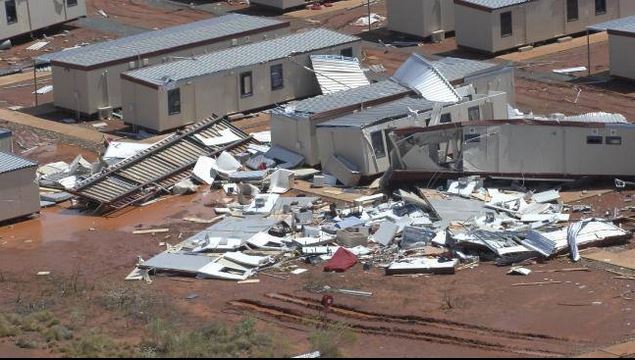MARCH 2019 (2) A SEVERE TROPICAL CYCLONE…
This month we were again to witness another tropical cyclone that, indirectly, touched us.
Over the years of our adventuring, there had been occasions when the cyclones that can impact Australia between about October and April had a greater impact on us than being just another news item.
The Adels Grove/Lawn Hill area of NW Qld, where we travelled and worked 2000-2006 is a region that is regularly impacted, either from those that come in directly over the Gulf of Carpentaria, or arrive over the Qld coast to the east, and then blow themselves out as tropical lows, bringing much rainfall to the state’s northwest. In 2000, we aborted our first planned visit to Adels Grove due to wet roads that hadn’t had a chance to dry out after such an event.
In March 2006 a tropical low pressure system – the precursor to cyclone development – hovered over the Gulf coast for several days and dumped much rain across the northern NT. The beautiful Pungalina, where we had worked and lived for six months of the previous year, was heavily affected, when the Calvert River broke its banks and inundated the home area, machinery shed and surrounding country to a depth of more than a metre. Much damage…

Calvert River near the home area at Pungalina. Hard to imagine this in a flood as deep as it was in 2006…
In 2006 we changed plans to work several months at Adels following a very slow start to the tourist season due to Cyclone Larry and its aftermath. Whilst travelling across the Barkly region of the NT, on the way to new jobs at Litchfield, we unwittingly got caught in the tail end of Cyclone Monica and spent an uncomfortable night bunkered down amid howling winds and torrential rain.

Just a tropical low…..by the Barkly Highway
Category 5 Tropical Cyclone George that crossed the Pilbara (WA) coast in March 2007, passed over the construction camps where we’d worked from September 2006 until February 2007, causing fatalities and massive damage to Rail Village 1. We missed being there by some three weeks, for which we remain forever grateful.

Cyclone damage at Rail Village 1
February 2011 saw us back in Darwin, crossing off a couple of items from John’s Bucket List: travelling on the Ghan train, and experiencing the Wet Season. We overdid the latter somewhat, and were confined to our accommodation for a couple of windy, wild and wet days when Cyclone Carlos passed through town. This was only a Category 1 cyclone but quite big enough for us, thank you. So much rain…

Watching the cyclone from our apartment in Darwin…
Pungalina, so dear to us, was to be hammered again, in March of 2019. This cyclone, named Trevor, really illustrated the unpredictability and sheer bloody mindedness of such systems. It formed on the 11th, way out in the Coral Sea, off PNG. After a week of meandering SW across that Sea,on 19th, it hit Lockhart River, on Cape York, as a Category 3, bringing strong winds and much rain. By the time it reached Weipa, on the other side of the Cape, (21st) it had declined to a Category 1. Now over water again – the Gulf of Carpentaria – it began to intensify, decided to turn to the SW and made a beeline for the Pungalina area. By the time it crossed the coast there, on 23rd, it had become a Category 4. Over land, it again declined quickly in wind intensity, however bringing much rain to the Barkly region of the NT as it continued SW. But it didn’t want to just continue that way and exhaust itself over the NT interior, so on 24th, it unexpectedly swung to the east. By 26th it was bringing heavy rain to Mt Isa and Cloncurry and continued to do so over areas of north-central Qld over the next couple of days, eventually becoming just another rain bearing low pressure system.

Cyclone Trevor (BOM)
Due to uncertainty about its eventual path, some vulnerable communities around the Gulf, such as Groote Eylandt and Borroloola had largely been evacuated – some 2,500 people in all. The RAAF had been called in to assist with this.
Trevor’s wind gusts reached 250kmh. Associated storm surges in places along the Gulf coast reached almost to 2 metres.
Pungalina had in 2007, been purchased by the Australian Wildlife Conservancy, to add to its portfolio of special and unique environments, to be responsibly managed to conserve their most valuable features. AWC’s research teams had already found some new species of fauna, as well as rare and threatened ones, here.
Cyclone Trevor had obviously provided the AWC resident managers with an “interesting” couple of days. At least this system had been fast moving, so although there were gale force winds and heavy rain, there had not been floods like those of 2006, when the tropical low stalled over the area, deluging it for days.
This photo was posted, taken during the cyclone…

Cyclone Trevor at Pungalina…This machinery shed and yard had been at least a metre under water in 2006.

May 29, 2024 at 11:57 pm
One cannot underestimate our weather patterns.